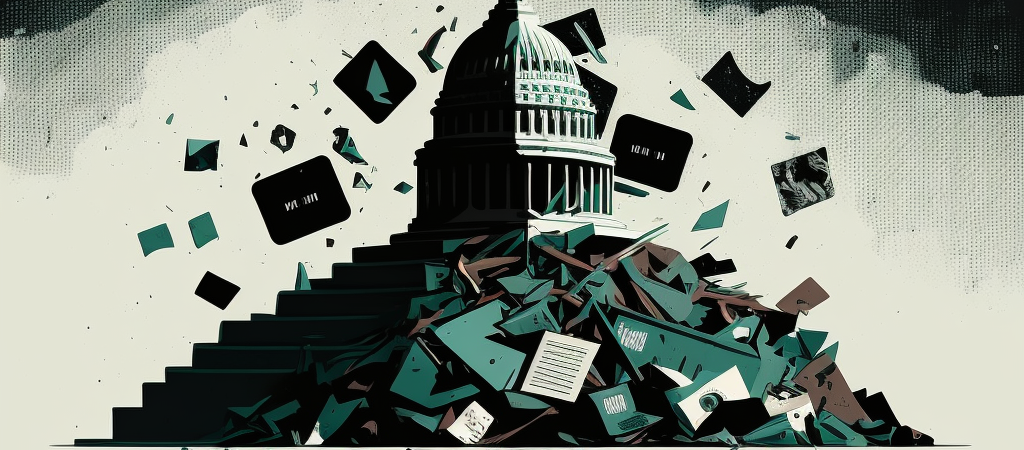
24 Mar The US Government vs. Crypto 💸
As a crypto enthusiast, it’s disheartening to see the blatant attack on the industry by the US government. It’s clear that there is a systematic effort to take down crypto, and it’s happening right in front of our eyes. In this post, I’ll go through some of the most egregious examples of this attack, and why it’s time for the government to back off. I recently read Nic Carter’s post about the current banking crisis and wanted to offer my insights and opinion to my readers.
The War on Banks
One of the most insidious tactics used by the government is the war on banks that serve crypto companies. In an effort to discourage banks from serving crypto, the government has caused deposits to crowd into a small handful of banks, rendering them highly exposed to the sector. And when these banks collapse, as we saw with Silvergate and Signature Bank, the government is quick to seize them and shut down their crypto practices.
Discrimination by the FHLB
Another example of the government’s attack on crypto is the discrimination by the Federal Home Loan Banks (FHLB) against crypto banks. The FHLB has been pressured to discriminate against crypto banks, which has contributed to the demise of Silvergate and the resulting bank run. This discrimination is not only unjust but also goes against the principles of a free market.
Politicizing Banking
The government’s attacks on crypto are not just limited to discriminatory practices. They also include politicizing banking against disfavored industries, such as what we saw during the first Choke Point campaign from 2013-17. This campaign was led by FDIC Chair Martin Gruenberg, who now presides over the seizure of crypto-focused banks. It’s hard to trust that he will be impartial when he has a track record of politicizing banking.
Lack of Due Process
One of the most troubling aspects of the government’s attack on crypto is the lack of due process. The government has the power to cut off banking access for an entire industry with no Congressional approval. There have also been instances where agencies have instituted informal policies without any written documentation, leaving companies in the dark about what they can and cannot do.
Ignoring Core Risks
Finally, the government’s attacks on crypto are happening at the expense of ignoring core risks to bank business models. Instead of focusing on the effect of rising rates on bank balance sheets, the government has spent an inordinate amount of time and resources on crypto supervision. This lack of attention to core risks is what led to the failure to anticipate the risks of rising rates on bank balance sheets and the collapse of banks like SVB.
Conclusion
In conclusion, I firmly believe that crypto has the potential to bring about positive change in our financial system by redistributing wealth and providing options for the unbanked. Moreover, having a system that can compete with the US monetary system is essential for maintaining a healthy and diverse financial landscape. However, if the government continues on this path of systematically taking down crypto, not only will it stifle innovation, but it will also drive away entrepreneurs and investors who will seek more favorable jurisdictions for their businesses. Ultimately, this will result in the US being left behind in the rapidly evolving world of technology and innovation. It is time for the government to rethink their approach and find ways to work with the crypto industry rather than against it.
